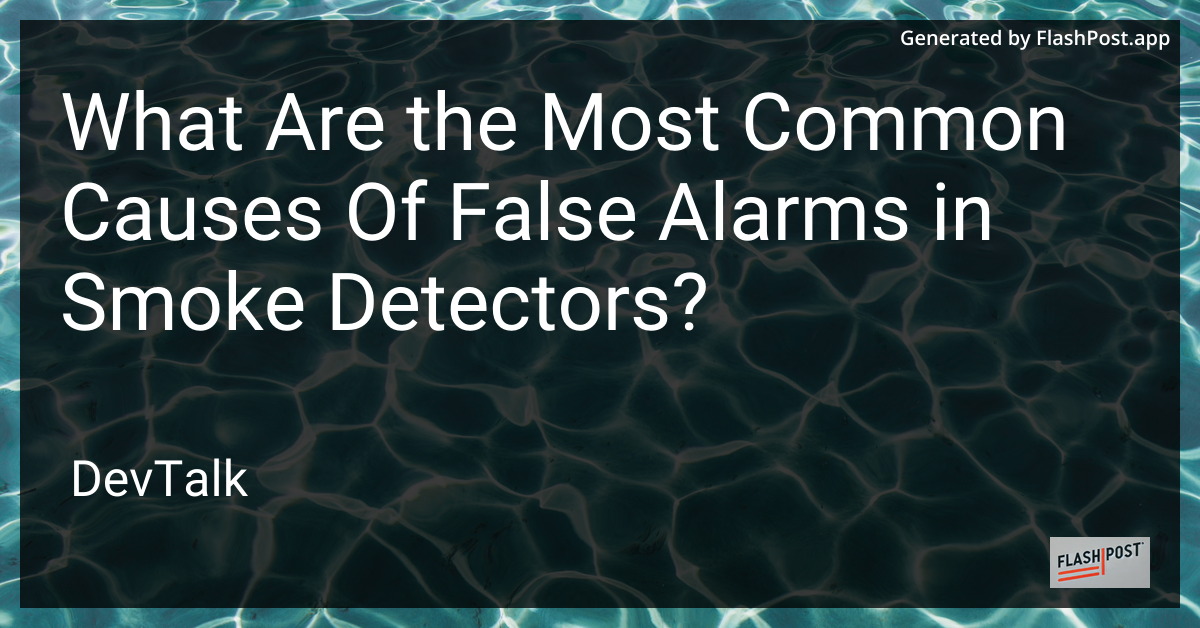What Are the Most Common Causes Of False Alarms in Smoke Detectors?
 # What Are the Most Common Causes of False Alarms in Smoke Detectors?
# What Are the Most Common Causes of False Alarms in Smoke Detectors?
Smoke detectors are crucial for safeguarding homes from fire hazards.
However, false alarms can be frustrating and, if frequent, might lead homeowners to ignore them. Understanding the common triggers of these unwarranted alerts can help in minimizing them and ensuring your device functions effectively and reliably.
Common Causes of False Alarms in Smoke Detectors
1. Cooking Vapors and Steam
Cooking activities are one of the primary culprits of false alarms. Smoke detectors placed too close to kitchen appliances can mistake cooking smoke and steam for danger. Opt for heat detectors in kitchens and ensure adequate ventilation to minimize this issue.
2. Humidity and Steam
High humidity levels, particularly in bathrooms or laundry rooms, can trigger alarms. Steam from showers or appliances like dryers can be mistaken for smoke. To prevent this, ensure good ventilation in these areas and avoid installing alarms too close to such moisture sources.
3. Dust and Dirt Buildup
Over time, dust and dirt can accumulate inside smoke alarms, affecting their sensors. Regular cleaning and maintenance are necessary to keep them functioning correctly. Use a vacuum cleaner with a hose attachment to gently remove dust every few months.
4. Insects
Small insects can interfere with the sensor's functionality, triggering false alarms. It's advisable to periodically open the detector and check for any pests inside. Sealing any openings with mesh tape can also help prevent this issue.
5. Strong Odors and Chemicals
Paint fumes, household cleaning chemicals, and other strong odors can occasionally set off smoke detectors. Ensure that areas being painted or cleaned are well-ventilated. If the problem persists, consider relocating your detector or using a model less sensitive to such vapors.
6. Malfunction or Expired Batteries
Sometimes, false alarms result from low battery power or a malfunctioning unit. As a rule of thumb, check the battery regularly and replace it every six months. It's also important to replace the entire detector every 8-10 years, as their sensors degrade over time.
7. Interference from Other Devices
Other devices in your home might operate on the same frequency as your smoke detector, causing interference. Ensure that your smoke detector is appropriately wired and updated to mitigate any such issues.
8. Temperature Fluctuations
Sudden temperature changes, such as those caused by HVAC systems or drafts, can sometimes confuse heat-sensitive alarms. Ensure your detectors are placed in stable environments without sudden temperature shifts.
Ensuring Your Smoke Detector Functions Properly
Proper placement, regular maintenance, and understanding the nuisances of your smoke detector can significantly reduce the likelihood of false alarms. This not only prolongs the life of the device but also ensures your home remains safe.
While protecting against fire hazards is the primary function of smoke detectors, it’s important to consider their role in detecting gases like carbon monoxide. To learn more about this, check out this guide on smoke detectors and carbon monoxide.
By addressing these common causes and integrating preventive measures, you can significantly reduce false alarms, ensuring your peace of mind and the safety of your residence.